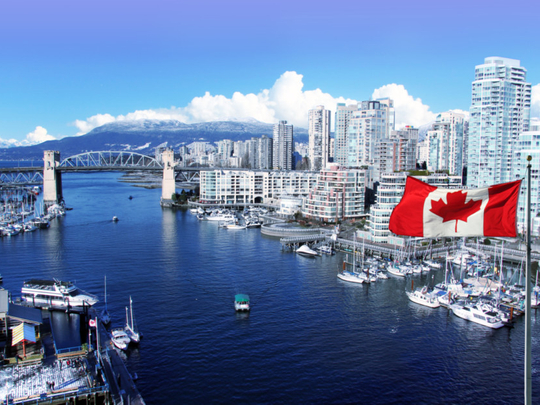
There’s a trend in global journalism you might have noticed. It’s been dubbed “Cansplaining.”
A Cansplainer is an article, column or report in an international publication offering a definitive explanation for why Canada is the way it is. It’s often written by a Canadian, but not always. Its tone overflows with confidence.
Cansplaining is more than mere reporting or analysis. In promising the reader a grand unified theory of Canada, it is a deeply ideological exercise. It represents a desire to control the country’s reputation in order to convince about politics and public policy, using Canada as metaphor, case study and controlled experiment. The most common Cansplainer is deeply flattering. It presents Canada as a country that has solved the big challenges of Western civilisation — especially immigration — better than anyone else, with its unique yet uncomplicated blend of compassion and inclusivity. These days, this often takes the form of essays praising Canada’s apparent immunity to movements of right-wing nationalism.
Derek Thompson of the Atlantic Cansplained this week about “Canada’s secret to escaping the ‘Liberal doom loop.’ “ Before that, there was “Canada’s secret to resisting the populist wave” by Amanda Taub in The New York Times, and before that an Economist cover story, “Liberty moves north.” Many Canadian authors specialise in producing this kind of content for international audiences, including Jon Kay, Stephen Marche, Michael Adams and Jeet Heer. If you see these bylines, chances are you’re getting Cansplained.
Another type of Cansplainer exists in opposition to the first, yet is written by a similar sort of author. This smaller, breakaway faction views the utopian Cansplainers as dishonest, hiding Canada’s dirty laundry from the world to boost the country’s brand. Toronto podcaster Jesse Brown is perhaps this side’s most energetic champion, writing columns such as “Only a country like Canada could produce a guy like Jordan Peterson” for The New York Times, or “Justin Trudeau is not the leader of the free world” for Slate. Fellow Torontonian Luke Savage has produced didactic essays for Current Affairs and the New Statesman on similar themes, and he was recently a guest on the Citations Needed podcast about “Maplewashing” — a term coined to decry excessive “fetishisation” of Canada by foreigners.
Despite the outward tension between these two Cansplaining tribes, much of their dialogue occurs within a shared liberal-left frame. Canada is presented as being either virtuous or flawed according to a narrow set of metrics that progressive urban journalists care about, including multiculturalism, climate change and inequality. The plight of Canada’s indigenous people is always emphasised, either as a lone spot of darkness in a nearly perfect place, or its defining sin. The inherent awfulness of the United States will always be taken for granted, with the only dispute being whether it has any Canadian equivalent. The overarching theme is accountability for those trusted to guard Canada’s progressive destiny, which currently means Prime Minister Trudeau.
I’m aware of the irony in writing all this. My own articles are often Cansplain-y — though I hope in a somewhat unconventional way — and even now I am Cansplaining the concept of Cansplaining. Yet as Cansplainer columns sprout across global media, a user guide seems overdue. Effectively navigating endless efforts to tell you what Canada is all about requires understanding the underlying reason why the explaining is being done, and being savvy to the blind spots of Canada’s boosters and critics alike.
Always look for gaps of attention. Much writing on Canada tends to focus on a handful of social issues relating to immigration, diversity and tolerance, with energy policy occasionally thrown in. But Canadian life is composed of far more than this. Is there any discussion of Canada’s economy? What about trends in employment, technology, health care, education, infrastructure, housing, faith, family or entertainment?
When policy is discussed, who is credited for making it? Is it explained on what basis this person or institution enjoys that authority? If an elected figure is mentioned, is the size of their victory made clear? What is their approval rating? Many institutions of Canada’s government are quite strange and have lower democratic standards than those of other Western countries. Is this conceded?
Another angle is public opinion. When it is asserted that “Canadians” feel this way or that, does the author cite polls that support this claim? When something is presented as a “consensus” Canadian opinion, is it the consensus of Canada’s people, or merely its elite?
Attempts to summarise Canadian politics on the basis of what sort of people vote for which party should be viewed with particular scepticism. Canadian pollsters almost never do election day exit polls, and sorting Canadians’ political preferences by race or culture is rarely done. A dearth of high-quality data remains a substantial barrier to insightful Canadian analysis.
Lastly, does the author make efforts to engage with aspects of Canada that do not fit into the frame of “like America, but better”? Are Quebec’s distinctions from English Canada acknowledged? Is the role played by official bilingualism as an instrument of power (and barrier to it) part of the analysis? What about long-standing disequilibriums of influence between Canada’s eastern and western provinces? Urban vs. rural communities?
In the English language press, the task of understanding Canada often seems straightforward, in part because so many journalists have an ideological interest in that being the case. The sheer amount of insecure effort fuelling this project should suggest that the goal is harder than it looks.
— Washington Post
J.J. McCullough is a writer based in Vancouver, Canada.










